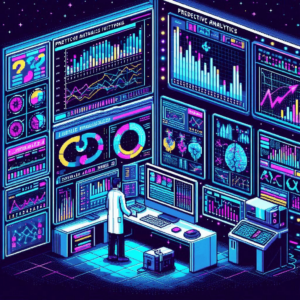The Evolution of Programming Environments
How Programming Environments Have Transformed Software Development Over Time
Programming environments have evolved significantly since the early days of computing. Initially, coding was a complex task requiring deep knowledge of hardware and low-level languages. Over time, advancements in technology have led to the development of user-friendly environments that enhance productivity, simplify workflows, and enable efficient software development.
Historical Context: Early Programming Challenges
The early era of programming relied on punch cards and assembly languages. During this period, programmers had to interact directly with hardware, requiring extensive knowledge of machine architecture. Since there was no abstraction, even minor tasks were labor-intensive. As computers evolved, so did the demand for more intuitive programming environments.
The Shift to High-Level Languages
The introduction of high-level languages in the 1950s and 1960s changed the programming landscape. Languages like FORTRAN and COBOL abstracted complex machine instructions, allowing developers to focus on logic rather than hardware details. This transformation laid the foundation for more advanced development tools, eventually leading to the emergence of integrated development environments (IDEs).
The Rise of Integrated Development Environments (IDEs)
What Are IDEs?
IDEs first appeared in the 1970s and 1980s to address growing software complexity. These tools combined essential programming resources, such as code editors, compilers, and debuggers, into a single interface. Popular IDEs, including Turbo Pascal and Microsoft Visual Studio, introduced features like syntax highlighting, error detection, and project management.
Impact on Productivity
The introduction of IDEs significantly improved developer efficiency. With built-in debugging and testing tools, programmers could detect errors faster and write better code. Additionally, having multiple functionalities within a single platform reduced the need for external tools, streamlining the development process.
Modern Programming Environments
Advancements in Development Tools
Modern programming environments offer a range of features designed to enhance collaboration, automation, and remote access. Cloud-based IDEs, such as GitHub Codespaces and AWS Cloud9, allow developers to work on projects from anywhere, eliminating the need for powerful local machines.
Collaborative Coding
Real-time collaboration is now a fundamental feature of programming environments. Tools like Visual Studio Live Share and CodeSandbox enable multiple developers to work on the same codebase simultaneously. This enhances teamwork, accelerates development cycles, and improves overall software quality.
The Role of Version Control Systems
Version control systems (VCS) have become indispensable in modern development workflows. Platforms like Git and Subversion allow developers to track changes, collaborate efficiently, and manage different project versions. The integration of VCS into programming environments has significantly reduced code conflicts and enhanced team productivity.
Continuous Integration and Continuous Deployment (CI/CD)
Why CI/CD Matters
With the rise of agile development, CI/CD pipelines have become essential. These automated workflows ensure that code changes are continuously integrated and deployed to production environments. As a result, software updates are released faster, with fewer errors.
Automation and Efficiency
By integrating testing and deployment automation, modern programming environments reduce manual interventions. This not only minimizes human errors but also allows developers to focus on building innovative solutions rather than managing infrastructure.
The Impact of Programming Environments on Software Development
Lowering the Barrier to Entry
User-friendly programming environments have made software development more accessible. Beginners now have access to comprehensive documentation, interactive tutorials, and AI-driven coding assistants. As a result, more individuals can learn to code, leading to a growing and diverse developer community.
Accelerating Innovation
Advanced programming tools enable rapid prototyping and experimentation. Features like intelligent code suggestions, debugging assistance, and automated refactoring help developers create high-quality applications faster than ever before.
The Future of Programming Environments
AI-Powered Development Tools
Artificial intelligence is transforming programming environments. AI-driven tools can now generate code, detect security vulnerabilities, and optimize performance. As these capabilities improve, developers will be able to focus more on designing innovative solutions rather than debugging routine issues.
Cloud-Native Development
Cloud-based development environments are expected to become the standard. With improved remote accessibility, enhanced scalability, and seamless collaboration, cloud-native IDEs will offer unprecedented flexibility to developers worldwide.
Conclusion
The evolution of programming environments has significantly shaped the software development landscape. From early assembly languages to modern cloud-based IDEs, programming tools have continuously adapted to meet developers’ needs. As artificial intelligence and cloud computing advance, programming environments will become even more efficient, offering developers smarter automation and enhanced collaboration features. Looking ahead, embracing modern development tools will be crucial for organizations striving for innovation and efficiency.
By leveraging the latest programming environments, developers can maximize productivity and efficiency. Additionally, the benefits of using an IDE for React Native development highlight how these tools enhance workflow, simplify debugging, and improve code quality. As the industry evolves, programming environments will remain at the forefront of technological advancement, empowering developers to build cutting-edge applications effortlessly.
Do you like to read more educational content? Read our blogs at Cloudastra Technologies or contact us for business enquiry at Cloudastra Contact Us.
